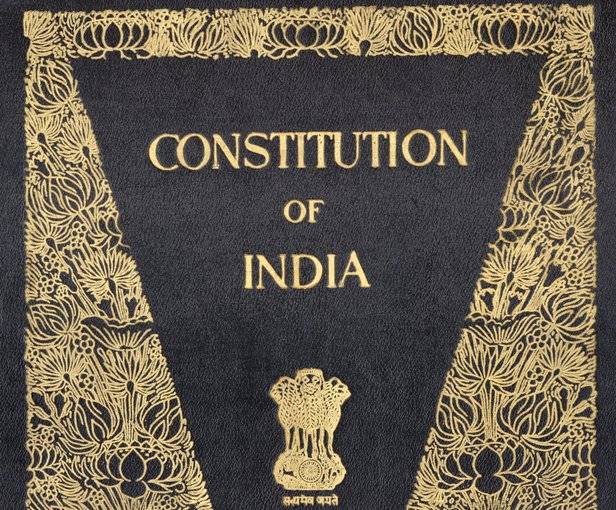Table of Contents
Meaning and Significance of the Indian Constitution
Meaning of the Indian Constitution
Introduction
- The Constitution of India is the chief and supreme law of India and it is in the form of a written document that lays down the framework demarcating fundamental political code, structure, procedures, authorities, and responsibilities of government and sets out directive principles, fundamental rights, and the duties of citizens.
- It is the lengthiest written constitution of any country in the world.
- R. Ambedkar, who was the chairman of the drafting committee, is also commonly known to be chief architect of the Indian Constitution.
- The first meeting of the constituent assembly had taken place on 9th December, 1946. On 11th December Dr. Rajendra Prasad took the permanent chairmanship of the sovereign constituent assembly for India.
- The Indian Constitution imparts Constitutional supremacy instead of parliamentary supremacy as it was created by the Constituent Assembly and not the Parliament.
- Parliament cannot countermand override the constitution.
- It was adopted by the Indian Constituent Assembly on 26 November 1949 and became effective on 26 January 1950. The Government of India Act 1935 got replaced by The Indian Constitution as the country’s fundamental governing document, and the Dominion of India became the Republic of India.
- The original document of the constitution is preserved in a helium-filled case at the Parliament House in New Delhi.
- The constitution of Indian has a preamble. It is an introductory statement in our constitution that guides the citizens of the nation. It declares India as a sovereign, socialist, secular, democratic republic that assures its citizens a life of equality, justice and liberty. The words secular and socialist were added to the preamble in the year 1976 during the Emergency.
Sources of Constitution
- The chapter on fundamental rights was on the model of the American Constitution.
- Parliamentary form of government was taken from the United Kingdom.
- The idea of directive principles was taken from the constitution of Ireland.
- Provisions relating to The Emergency were taken from German Reich.
Salient Features of the Indian constitution
- It is the lengthiest constitution in the world. It has 460 articles, 25 parts and 12 schedules.
- The constitution of India establishes a parliamentary form of Government both at centre and the state level.
- There is a unique blend of rigidity and flexibility in the Indian Constitution. A rigid constitution is one which requires special method of amendment of any of its provisions while in a flexible constitution any of its provisions can be amended through ordinary legislative procedures.
- Fundamental rights are the rights of every Indian citizen that cannot be taken away from the citizen as guaranteed in part III of the Indian Constitution.
- The directive principles of thee state policy contained in part IV set out the aims to be taken up by the states while governing the country.
- The most prominent feature of Indian Constitution is that being a federal constitution it acquires a unitary character during the time of emergency.
- The old system of communal electorate has been abolished and the uniform adult suffrage system has been adopted.
- The judiciary is independent from the executive and legislature.
- It declares India as a secular state meaning that no religion is recognized as the religion of state.
- Every citizen of India enjoys the same rights of citizenship no matter in what state he resides. This is called single citizenship.
- The fundamental duties are a constant reminder to every Indian that while the constitution has strictly conferred to the fundamental rights, it also requires the citizens to observe certain basic norms of democratic behaviour.
Significance of the Indian Constitution
- It describes how a democratic nation should function.
- It explains who will form the government and what will be its roles and responsibilities.
- It explains the relationship between the state and the citizens.
- It limits the powers of the government and increases the role of citizens.
- It tells the people about the rights over and above the state.
- It also explains the duties of all Indian citizens.
- The constitution provides a lot of transparency to the system through its detailed procedures that are to be followed while carrying out legislative, executive and judiciary activities.
- Irrespective of any circumstances, because of the constitution, fundamental rights cannot be taken away from any Indian citizen.
- Parliament cannot enact law that destroy the basic structure of our constitution. This is for the welfare of the citizens. Examples of these are: dignity of an individual, separation of power, principles of equality, free and fair elections, free and independent judiciary, sovereignty of the country, etc.
- Indian constitution believes in sharing of power rather than centralization of power or power in fewer hands.
- It lays down principles for people from different religions, castes, ethnic groups so that they can live in harmony.
Author: Khushi Maheshwari Maheshwari,
Fairfield Institute of Management and Technology

